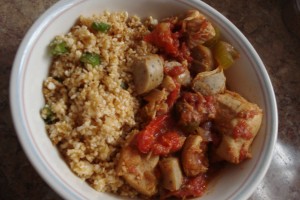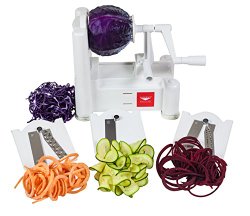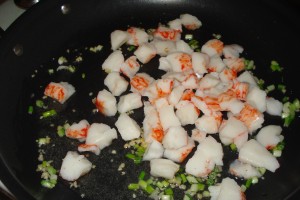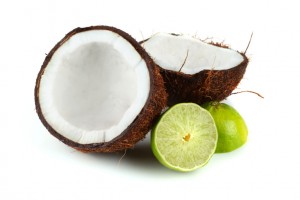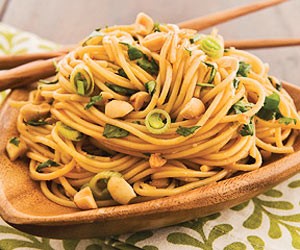Sometimes recipe searches lead to unexpected places. In my ongoing search for new ideas to fuel low-carb recipe substitutions, I encountered a recipe for Beef Bolognese with spiralized rutabaga noodles. This recipe rang two distant bells of memory for me.
First, I have certainly heard of Bolognese before, but it is one of those continental recipes that has, over the years, simply buzzed along the outskirts of my recipe radar. In general, I’m don’t actively search for new Italian recipes, simply because I have a pretty thorough existing repertoire in that cuisine category. Bolognese is essentially Italian meat sauce, which is perhaps as non-novel an Italian recipe as one could imagine. Having stumbled upon this particular recipe, however, I found myself intrigued by the spice mixture. In addition to the typical Italian green spices like parsley and oregano, it also included cinnamon and cloves. The addition of these more fragrant dark spices to more traditional Mediterranean tomato sauce is a combination I’ve enjoyed before in Greek Pastitso. Upon further investigation of Bolognese recipes, I found that some included nutmeg as well as other ingredients that intrigued me. Also, I found recipes for Bolognese both with ground beef and the stew beef, the latter variation a timely upgrade, as my dad had requested I incorporate a beef roast into our meal this past weekend.
Second, the use of spiralized rutabaga turned out to be something of a eureka moment. Many years ago, when I was in high school, I hunted down a rutabaga and some other atypical root vegetables to try out a particular recipe back when I was on a 90’s-style low-fat healthy eating kick. At the time, my tastes were not terribly well-evolved and I found myself slightly off-put but the difference in flavor between the rutabaga and a typical white potato. Without even tasting them anew, I immediately knew that my current adult palate would welcome these atypical root vegetables, such as rutabaga and turnips… especially when I discovered how relatively low they are in carbs. Rutabaga is only 9g/100g and turnips a measely 6g/100g. That’s even better than the 12g/100g in the butternut squash that forms the basis of my newly beloved squ-oodles! Both these vegetables have a similar consistency to butternut squash in that they are more substantial than the flimsier and more likely to spoil zucchini. They are also cheaper and easier to prepare for spiralizing than butternut. They can both be peeled simply like a potato and there are no seeds to carve out. Once my backyard supply of butternut squash runs out, I’ll need a more cost effective alternative to keep me through the winter, and both are worthy candidates.
As follows is my Beef Bolognese, a compilation of my favorite aspects of all the Bolognese recipes I evaluated online. I served it over spiralized rutabaga (rutab-oodles!), but it could certainly be served with any spiralized vegetable or with regular pasta.
SARAH’S BEEF BOLOGNESE2 tablespoons bacon fat
2 onions
3 cloves chopped garlic
2 stalks celery
1 (28 ounce) can chopped tomatoes
1 (6oz) can tomato paste
1 cup beef stock or one boullion cube
1 cup red wine
1 tbsp dried parsley
1 tbsp paprika
1 tsp oregano
1/2 tsp dried thyme
1/2 tsp ground cinnamon
dash ground clove
dash ground nutmeg
2 lb beef, ground or cubed
2 bay leaves
salt and pepper, to taste
Heat bacon fat in a medium-large saucepan, or in the bottom of a crockpot. Add the chopped onion, garlic and celery. Saute until soft.
Add the tomatoes (discard liquid if using a crockpot) and tomato paste. Add the beef stock if using a saucepan, or a beef bouillon cube if using a crockpot. Add the wine and spices up to and including the nutmeg. Process with an immersion blender, if desired, to puree the vegetables into a smooth sauce.
Add the beef cubes after pureeing, and then the bay leaves, salt and pepper. Cover and simmer on low fire (in crockpot, low or high is fine, depending on how soon you want it to be ready; generally 4 hours on high or 8 hours on low) until beef is done. Ground beef simply should be cooked, cubed beef should be done enough to shred easily with a fork.
Serve over pasta or vegetables. Garnish with parmesan cheese.

